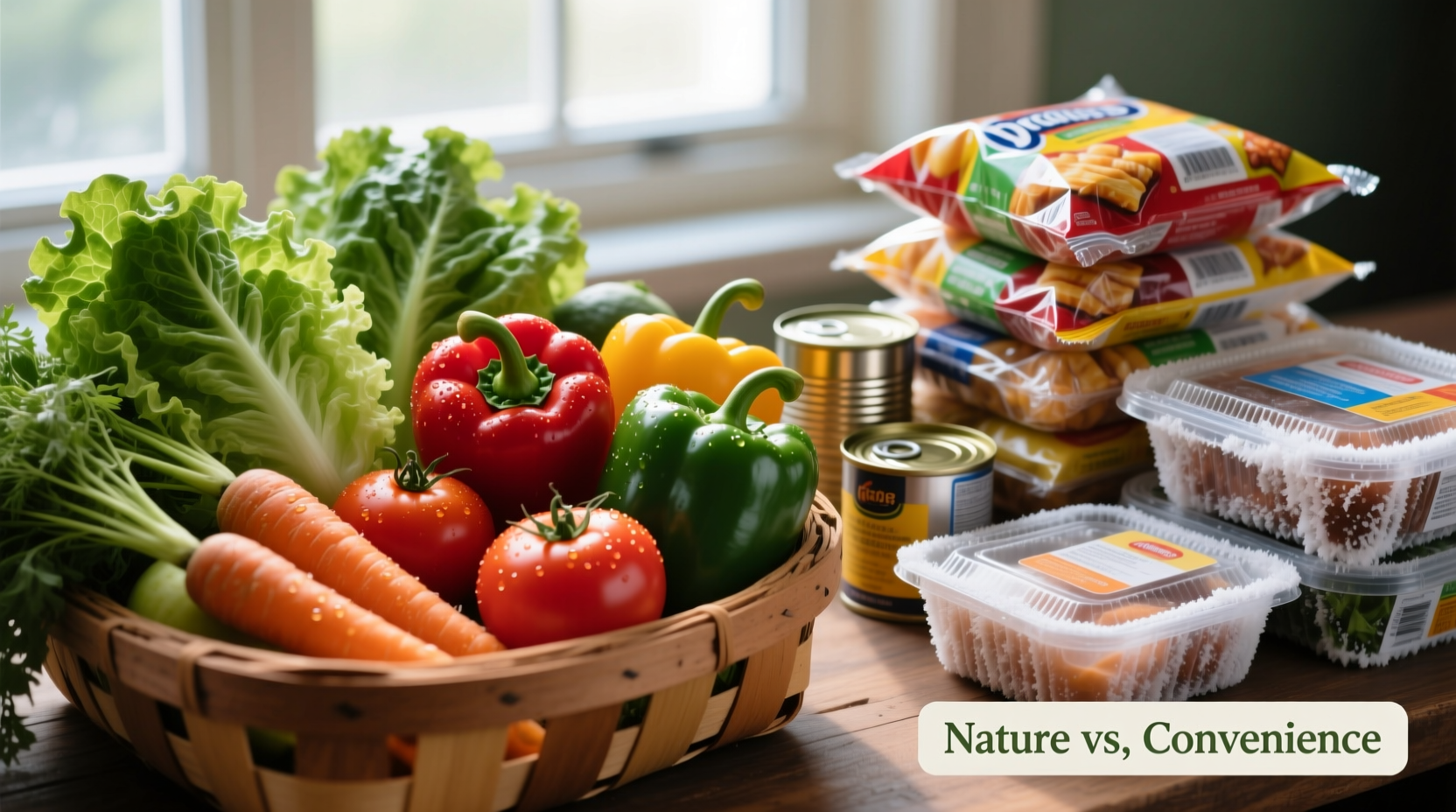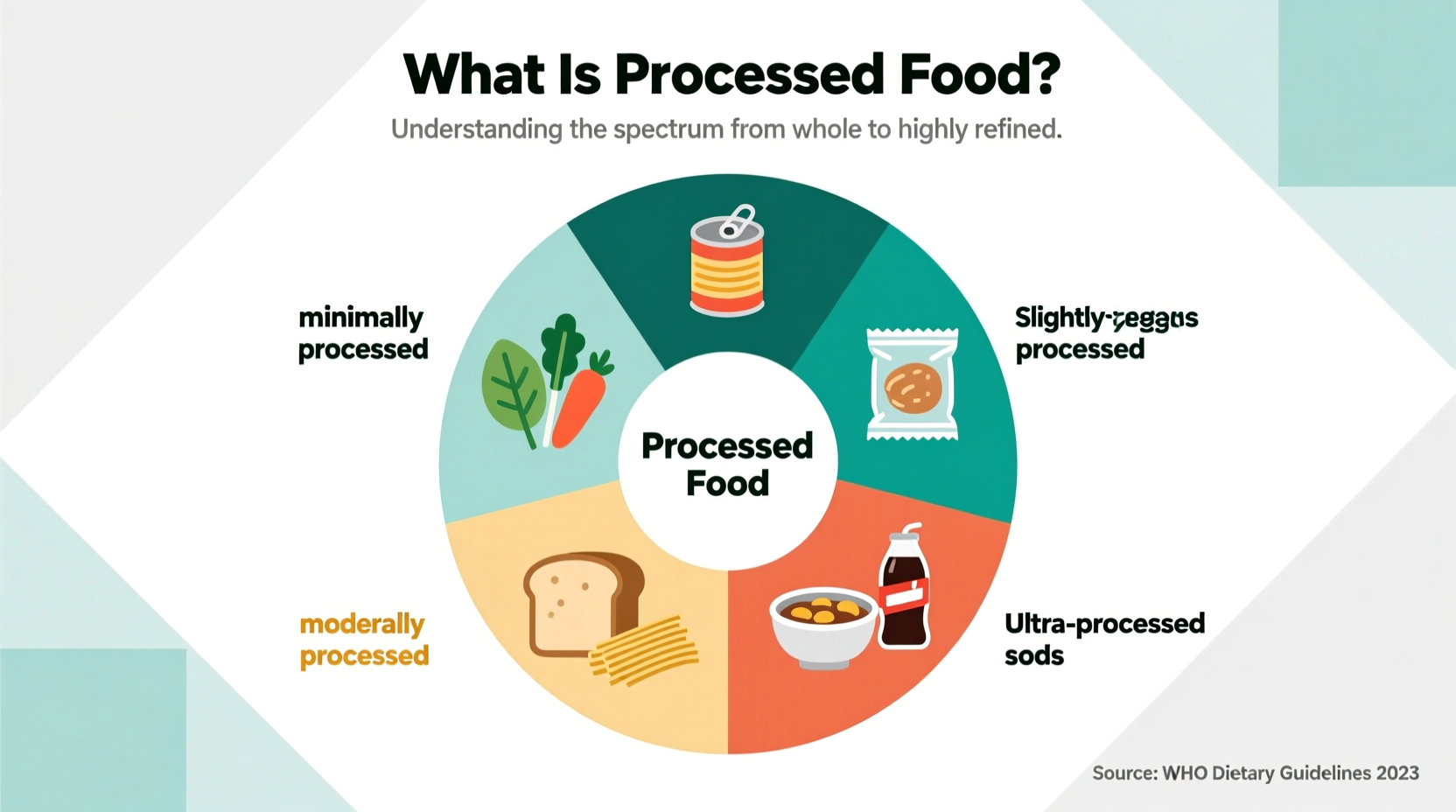When you're standing in the grocery aisle wondering if that frozen vegetable package counts as processed food, you're not alone. Many consumers struggle to distinguish between minimally processed foods that retain nutritional value and ultra-processed options that may contain numerous additives. This guide cuts through the confusion with clear definitions, practical examples, and evidence-based insights to help you navigate food choices confidently.
The Spectrum of Food Processing: Beyond Simple Labels
Food processing isn't binary—it exists on a continuum from minimal to extensive transformation. The World Health Organization recognizes that some processing enhances food safety and nutrition, while excessive processing may reduce health benefits. Understanding where foods fall on this spectrum empowers smarter shopping decisions.
Official Definitions: What Experts Consider Processed Food
The U.S. Food and Drug Administration defines processed food as any food that has been altered from its natural state, whether through washing, cleaning, milling, cutting, heating, pasteurizing, cooling, freezing, drying, dehydrating, mixing, packaging, or adding ingredients.
Researchers commonly use the NOVA food classification system, which categorizes foods into four groups based on processing level:
| NOVA Group | Processing Level | Examples | Typical Ingredients |
|---|---|---|---|
| 1 | Unprocessed/Minimally Processed | Fresh fruits, vegetables, eggs, milk | Natural state or basic preservation |
| 2 | Processed Culinary Ingredients | Salt, sugar, oils, vinegar | Extracted from whole foods |
| 3 | Processed Foods | Canned vegetables, cheese, freshly baked bread | 2-3 ingredients, recognizable |
| 4 | Ultra-Processed Foods | Soda, packaged snacks, ready meals | 5+ ingredients, additives, unrecognizable |
Evolution of Food Processing: A Historical Timeline
Food processing isn't a modern phenomenon—it's evolved alongside human civilization:
- Prehistoric Era: Early humans discovered fire for cooking, making food safer and more digestible
- Ancient Civilizations: Egyptians developed drying and salting techniques; Romans used fermentation for preservation
- 19th Century: Nicolas Appert invented canning; Louis Pasteur developed pasteurization
- Early 20th Century: Refrigeration and freezing technologies emerged
- Post-WWII: Rise of convenience foods and industrial food production
- 21st Century: Advanced techniques like high-pressure processing and modified atmosphere packaging

Practical Identification: Spotting Processed Foods in Your Kitchen
Learning to identify processed foods helps make informed choices without unnecessary restriction. Here's how to assess foods in your pantry:
Minimal Processing Clues
- Single-ingredient items (frozen berries, bagged spinach)
- Short ingredient lists with recognizable components
- Packaging focused on preservation rather than transformation
Signs of Extensive Processing
- Long ingredient lists with unfamiliar components
- Multiple forms of sugar (high-fructose corn syrup, maltose, dextrose)
- Presence of emulsifiers, stabilizers, or artificial colors
- Claims like "extended shelf life" or "preservative-free" (which often means alternative preservatives)
Context Matters: When Processing Benefits Health
Not all processing is problematic. Certain techniques enhance food safety and nutrition:
- Pasteurization eliminates harmful bacteria in milk and juice
- Freezing preserves nutrients in fruits and vegetables at peak ripeness
- Fermentation creates probiotics in yogurt and sauerkraut
- Canning makes seasonal produce available year-round
The Harvard T.H. Chan School of Public Health emphasizes that the concern lies primarily with ultra-processed foods containing multiple additives, artificial ingredients, and excessive amounts of sugar, salt, or unhealthy fats.
Making Practical Choices: Beyond Fear-Based Decisions
Instead of labeling all processed foods as "bad," focus on balance and awareness:
- Read labels critically: Look for products with short ingredient lists containing recognizable items
- Understand "minimally processed" claims: This marketing term lacks strict regulation but generally indicates basic preservation techniques
- Consider preparation method: A frozen vegetable is minimally processed, but the same vegetable in a ready-made meal with multiple sauces is ultra-processed
- Balance your plate: The USDA MyPlate guidelines recommend filling half your plate with fruits and vegetables—whether fresh, frozen, or canned
Expert Consensus on Processed Foods
Major health organizations agree that while some processing enhances food safety and accessibility, excessive consumption of ultra-processed foods correlates with negative health outcomes. The American Heart Association recommends limiting ultra-processed foods that often contain high levels of added sugars, sodium, and unhealthy fats.
Registered dietitians emphasize that occasional consumption of processed foods fits within a balanced diet. The key is developing awareness of what you're eating and making informed choices based on your individual health needs and lifestyle.











 浙公网安备
33010002000092号
浙公网安备
33010002000092号 浙B2-20120091-4
浙B2-20120091-4